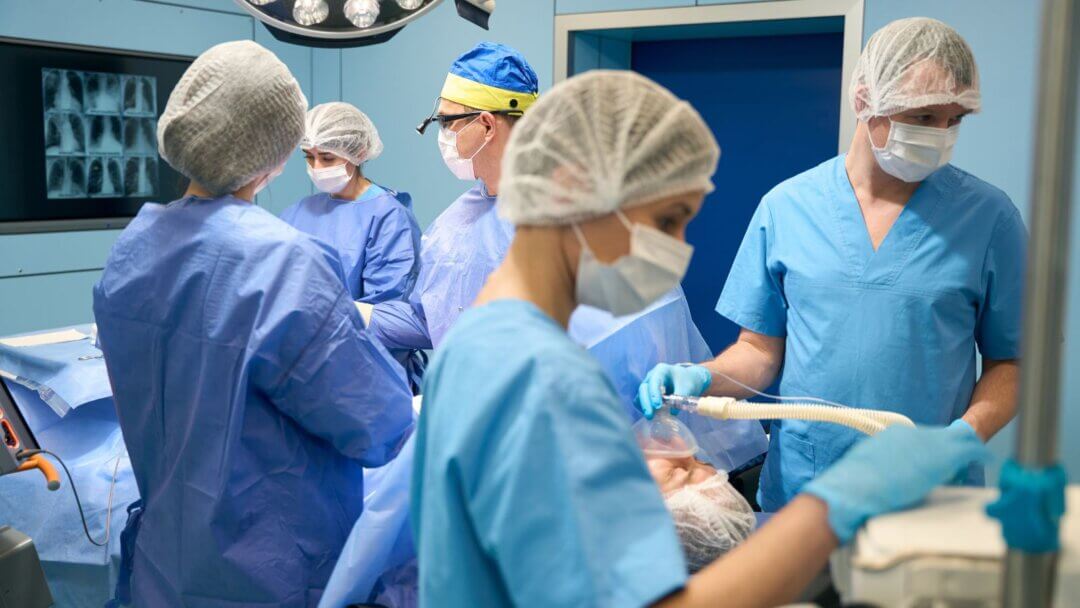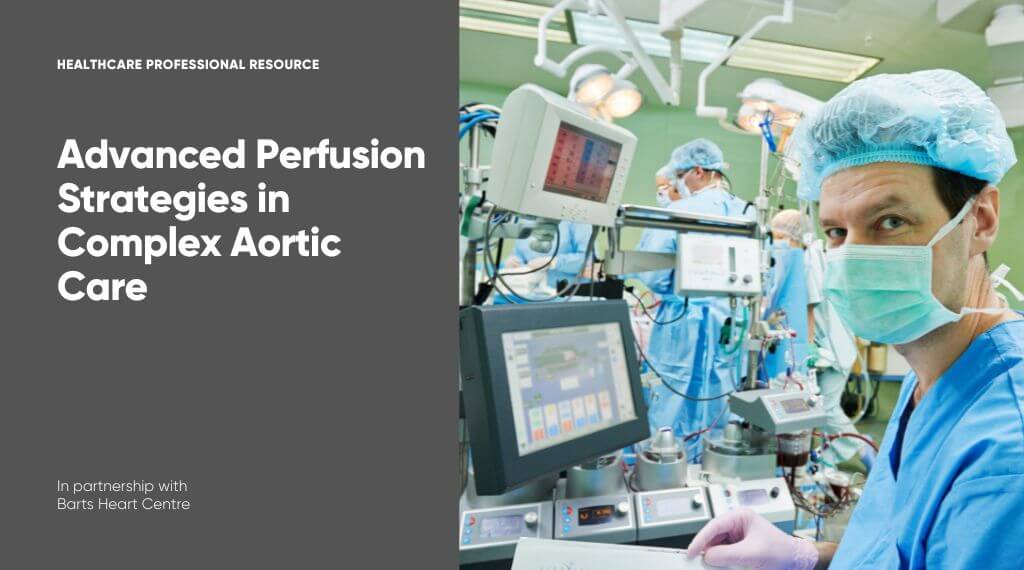The latest instalment of the AortaEd webinar series, Aortic Dissection Patient Safety and the Future, offered an in-depth exploration of critical strategies, systemic improvements, and technological advances aimed at enhancing patient safety in aortic dissection care. The event brought together leading experts from various disciplines, showcasing cutting-edge approaches to creating safer, more effective services.
With a sharp focus on collaboration, resilience, and innovation, the speakers provided valuable insights into how the healthcare community can transform care for this high-risk group.
Access the Webinar Recordings
Visit our Health Care Practitioner Learning Portal to access the full recordings from this series of events and deepen your understanding of advanced perfusion strategies, safety culture, decision-making frameworks, and emerging innovations in complex aortic care.
Creating a Safe and Supportive Service Structure
John O’Neill, Chief Clinical Perfusionist, opened the session with a compelling discussion on the intricacies of creating a service structure that prioritises both patient safety and staff wellbeing. Aortic dissection care, by nature, demands exceptional preparedness due to its acute and complex presentation. John explained how service structure encompassing staffing, systems, and support mechanisms plays a pivotal role in ensuring patient outcomes and fostering a culture of safety.
One highlight was the introduction of the N+1 staffing model, which ensures sufficient personnel availability for emergency scenarios while maintaining staff wellbeing. He also addressed pre-prepared surgical circuits, designed to save precious minutes during critical operations. Reflecting on audit data and near-miss incidents, he stressed the importance of simplifying processes, improving team resilience, and nurturing a no-blame culture for long-term service success.
John’s holistic approach underscored how integrating systemic safety with human-centred design can improve outcomes while addressing staff burnout and operational challenges.
The Role of Human Factors in Enhancing Aortic Dissection Services
Philip Gamston, Perfusion Services Manager and Patient Safety Specialist delivered an insightful presentation on human factors and their impact on safety and efficiency within aortic dissection care. He introduced the SEIPS (Systems Engineering Initiative for Patient Safety) model, which provides a structured framework to analyse how people interact within complex systems.
Philip critiqued outdated “blame-and-retrain” cultures, urging a shift toward restorative practices and systems thinking. By applying the PSIRF (Patient Safety Incident Response Framework), he illustrated how organisations can adopt a compassionate, evidence-based approach to learning from safety incidents.
Key strategies included enhancing psychological safety, empowering teams to shape their working environments, and promoting a just culture that values open communication. By incorporating human factors into daily practice, healthcare providers can address systemic challenges, reduce errors, and build safer, more adaptable services.
Optimising Communication in the Theatre Environment
Professor Rakesh Uppal, Consultant Cardiac & Aortic Surgeon explored the pivotal role of effective communication in high-stakes surgical environments. He delved into strategies to enhance situational awareness, standardisation, and teamwork during emergencies.
Rakesh stressed the importance of leadership that fosters respectful communication and emotional intelligence, enabling teams to adapt dynamically to complex scenarios. Structured Operating Procedures (SOPs) were presented as a means to improve coordination and reduce variability during critical phases of care.
In conversation with Philip Gamston, Rakesh also addressed systemic challenges within the NHS, emphasising the importance of resource adequacy and systemic safety. The session concluded with a call to embed collaborative leadership and continuous learning into the NHS ethos, ensuring sustainable safety practices.
Decision-Making and Risk Analysis in Aortic Dissection Services
Returning to present, Philip Gamston highlighted the importance of robust decision-making frameworks and real-time risk analysis in critical care settings. Through examples of multidisciplinary team (MDT) training at Barts Heart Centre, he showcased how fostering collaboration and empathy among clinicians improves outcomes.
Philip advocated for structured team training sessions that develop key non-technical skills, such as situational awareness, communication, and leadership. These skills not only enhance patient safety but also create a supportive environment for staff.
His vision included embedding safety science into the organisational fabric, using tools like participatory ergonomics to identify systemic risks and promote sustainable practices.
The Future of Safety in Aortic Dissection: Emerging Trends and Innovations
John O’Neill returned to discuss future trends in aortic dissection care, focusing on technological advancements that simplify procedures and improve safety. Innovations in heart-lung machines (HLMs), hybrid theatres, and cardioplegic solutions were identified as transformative tools that reduce risks associated with complex surgeries.
John particularly emphasised next-generation HLMs with advanced automation and data integration capabilities. These devices promise to enhance patient monitoring and streamline processes, allowing clinicians to focus on critical tasks.
His presentation concluded with a call for collaboration and the establishment of national standards, highlighting the need for systemic thinking and knowledge-sharing to address challenges and uncertainties in aortic dissection surgery.
Innovations in Pre-Emptive Treatment: The PEARS Procedure
Conal Austin, Consultant Cardiac Surgeon, introduced the PEARS (Personalised External Aortic Root Support) procedure, a groundbreaking preventive surgical technique for patients at risk of aortic dissection due to connective tissue disorders.
Unlike traditional surgical methods, PEARS is a less invasive approach that preserves the aorta and valve, allowing patients a quicker recovery with fewer long-term complications. Conal shared success stories, including elite athletes resuming careers post-surgery, and called for broader adoption of this innovative procedure.
Conal concluded by emphasising the importance of surgeon training and patient awareness to offer PEARS as a viable alternative to conventional methods.
The Aortic Dissection Patient Safety and the Future webinar delivered a wealth of knowledge on creating safer and more efficient services. From systemic safety models and human factors to innovative technologies and pre-emptive treatments, the session underscored the importance of collaboration, resilience, and forward-thinking strategies in transforming care for aortic dissection patients.
As the medical community continues to address the challenges of this high-risk condition, the insights from this event provide a robust foundation for improving outcomes and supporting both patients and clinicians.

